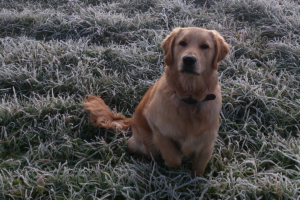Walking with your dog can be a pleasant activity, but many owners face the challenge of teaching their furry friends to walk together in a calm and controlled manner. This guide covers effective strategies for training your dog to walk alongside you, providing an enjoyable experience for both of you.
Introduce consistent language for basic commands such as “sit,” “stay,” and “come.” Practice these commands in controlled environments before proceeding to walk. Consistency is key, reward desired behaviors and avoid excessive reprimands. This gradual process will lay a solid foundation for subsequent training.
Before starting formal training, it is crucial to establish solid communication and strengthen the bond between you and your dog. Start with short play sessions and rewards to build confidence. By developing a deeper connection, your dog will be more inclined to pay attention and respond to your commands during the walk.
1. Laying the Foundation: Understanding the Importance of Communication and Bonding
Before starting formal training, it is crucial to establish solid communication and strengthen the bond between you and your dog. Start with short play sessions and rewards to build confidence. By developing a deeper connection, your dog will be more inclined to pay attention and respond to your commands during the walk.
By establishing clear communication, your dog will better understand what you expect of him during training. Use verbal commands consistently, associating them with specific actions. Be consistent in body language and facial expressions, transmitting clear signals. Effective communication will strengthen mutual understanding, facilitating training and everyday interaction.
2. Games and Affective Bond: Building a Relationship of Trust
In addition to verbal communication, invest in moments of play to strengthen the emotional bond. Interact in a playful way, providing fun and showing affection. These shared moments will create positive associations, making training more enjoyable for your dog. A relationship based on trust and affection will facilitate not only learning, but also the construction of a solid and lasting partnership.
2.1 Training in Practice: Techniques for More Harmonious Walking
Consolidation and maintenance are key to ensuring positive habits in the long term. Training to walk together is not a one-time task; It is an ongoing process that requires patience and consistency. Continue to practice regularly, but also allow moments of exploration and controlled freedom during walks. This will help prevent boredom and keep your dog interested in the shared experience.
Celebrate successes and be prepared to correct deviations when necessary. Your dog may occasionally become distracted, but with positive reinforcement and gentle redirection, you can maintain a consistent pattern of behavior. Remember that patience and affection are essential to strengthen the relationship between you and your dog, transforming walks into moments of connection and mutual joy.




